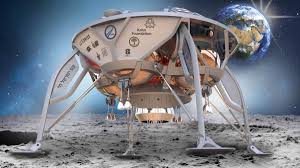
Breaking News
 IT'S OVER: Banks Tap Fed for $17 BILLION as Silver Shorts Implode
IT'S OVER: Banks Tap Fed for $17 BILLION as Silver Shorts Implode
SEMI-NEWS/SEMI-SATIRE: December 28, 2025 Edition
 China Will Close the Semiconductor Gap After EUV Lithography Breakthrough
China Will Close the Semiconductor Gap After EUV Lithography Breakthrough
 The Five Big Lies of Vaccinology
The Five Big Lies of Vaccinology
Top Tech News
 EngineAI T800: Born to Disrupt! #EngineAI #robotics #newtechnology #newproduct
EngineAI T800: Born to Disrupt! #EngineAI #robotics #newtechnology #newproduct
 This Silicon Anode Breakthrough Could Mark A Turning Point For EV Batteries [Update]
This Silicon Anode Breakthrough Could Mark A Turning Point For EV Batteries [Update]
 Travel gadget promises to dry and iron your clothes – totally hands-free
Travel gadget promises to dry and iron your clothes – totally hands-free
 Perfect Aircrete, Kitchen Ingredients.
Perfect Aircrete, Kitchen Ingredients.
 Futuristic pixel-raising display lets you feel what's onscreen
Futuristic pixel-raising display lets you feel what's onscreen
 Cutting-Edge Facility Generates Pure Water and Hydrogen Fuel from Seawater for Mere Pennies
Cutting-Edge Facility Generates Pure Water and Hydrogen Fuel from Seawater for Mere Pennies
 This tiny dev board is packed with features for ambitious makers
This tiny dev board is packed with features for ambitious makers
 Scientists Discover Gel to Regrow Tooth Enamel
Scientists Discover Gel to Regrow Tooth Enamel
 Vitamin C and Dandelion Root Killing Cancer Cells -- as Former CDC Director Calls for COVID-19...
Vitamin C and Dandelion Root Killing Cancer Cells -- as Former CDC Director Calls for COVID-19...
 Galactic Brain: US firm plans space-based data centers, power grid to challenge China
Galactic Brain: US firm plans space-based data centers, power grid to challenge China
Private Lunar Landings Are Coming, and They're Like Nothing You've Seen Before

The race to become the first private entity to land a robot on the Moon is heating up, as five teams close in on the Google Lunar XPrize. The final heat of candidates were winnowed down from dozens of contenders that couldn't clear hurdles or meet deadlines for the prize, which included designing and building original spacecraft, meeting flight regulations, and securing a launch contract scheduled to blast off by the end of 2017.
The last groups standing were announced on Tuesday: They are (drum roll) Moon Express, SpaceIL, Team Indus, Hakuto, and Synergy Moon. All five teams are tentatively on track for launches this year.
Established in 2007 by the nonprofit XPrize organization, the Google-sponsored Lunar XPrize is an open challenge to create a robot that can voyage to the Moon, travel at least 500 meters on its surface, and send high-resolution visuals back to Earth. A total of $30 million in prize money is at stake, two thirds of which will be awarded to the first team to successfully meet the contest's requirements.



